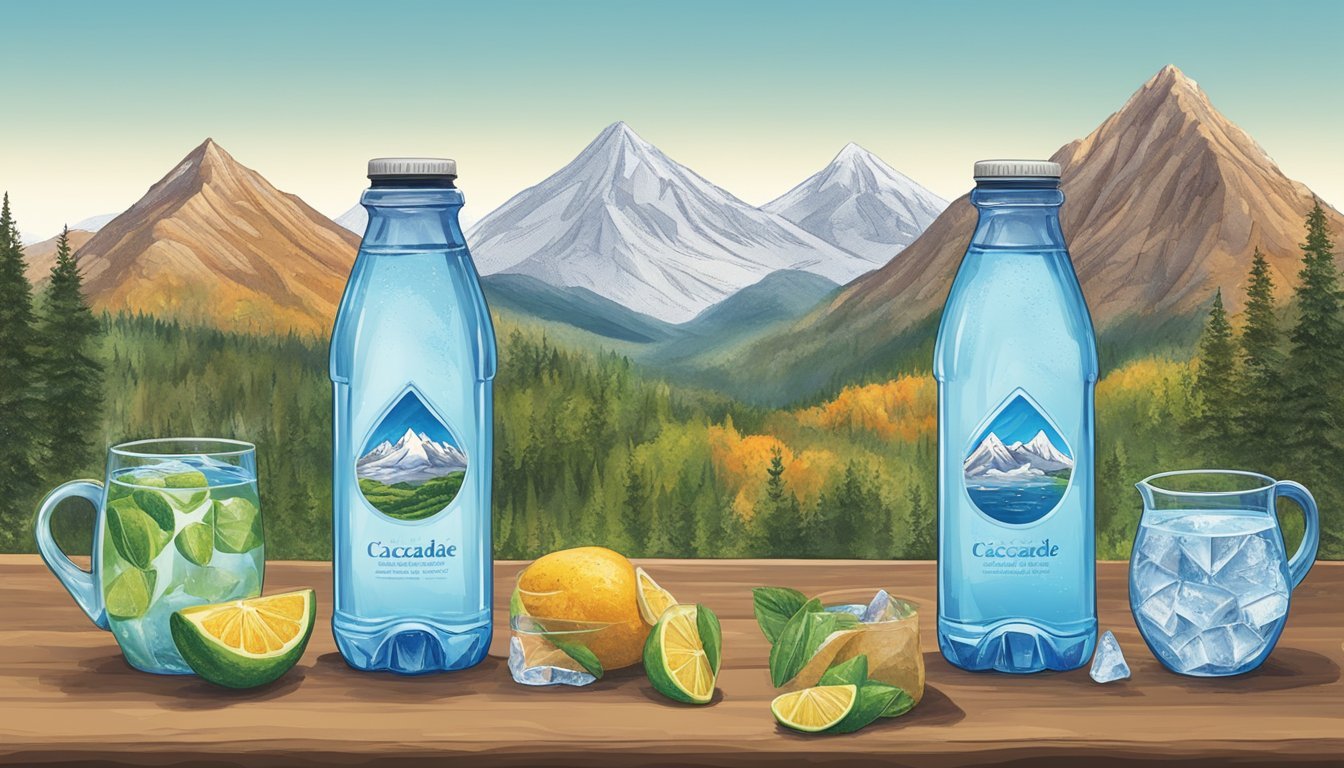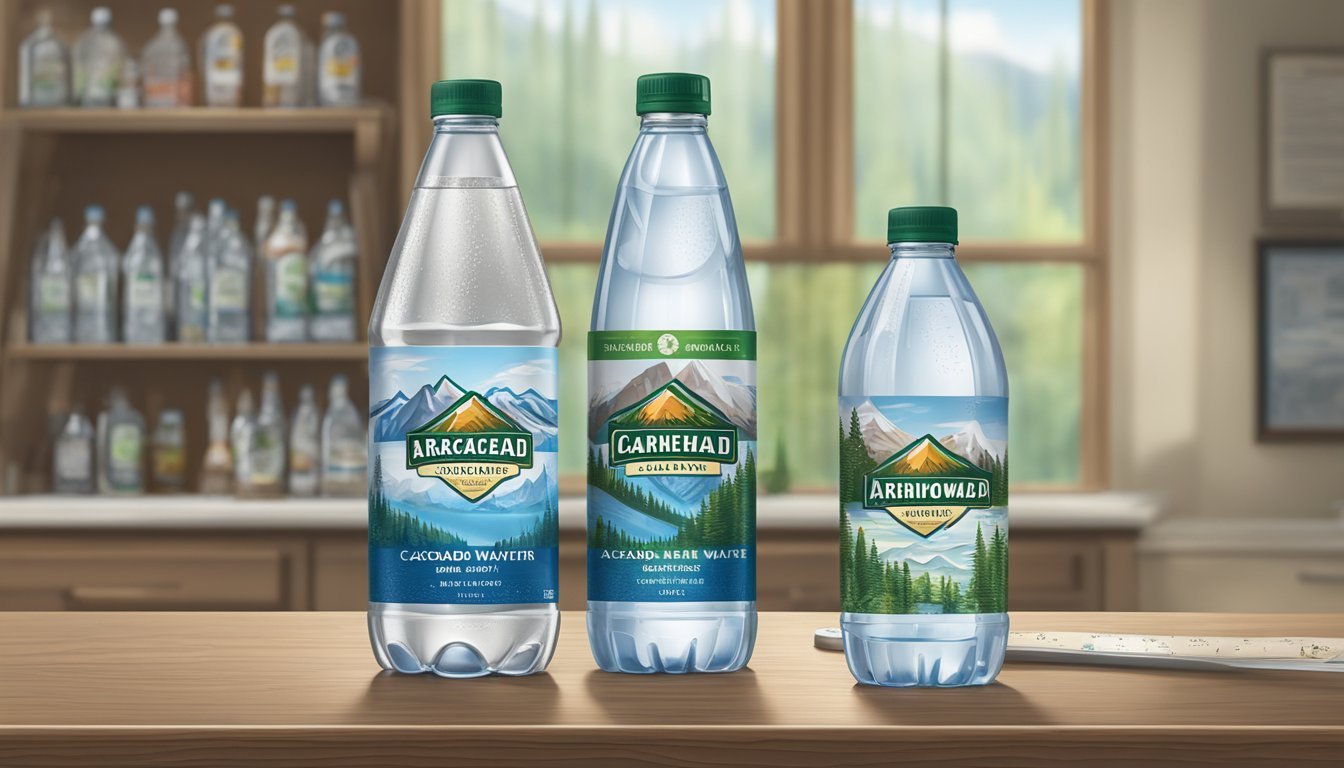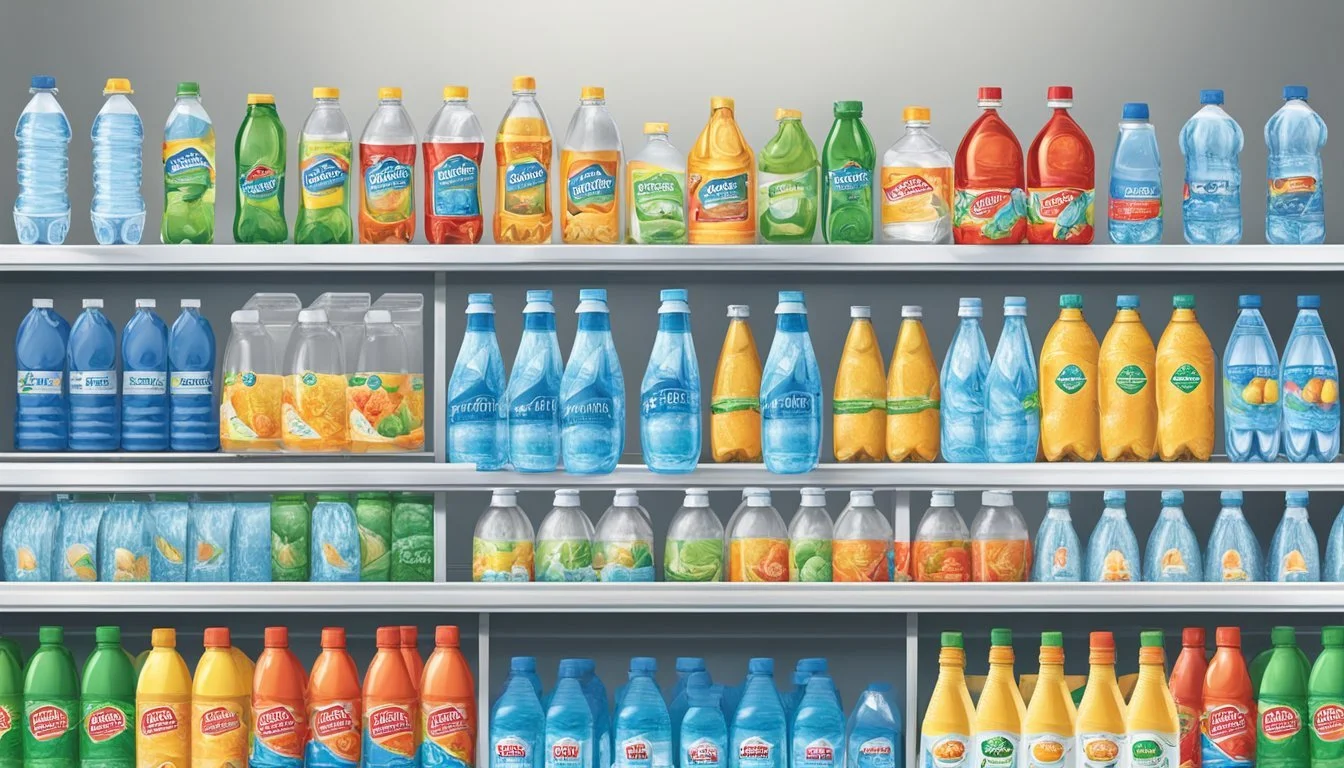Arrowhead vs. Cascade Mountain
Comparing Two Bottled Waters for Quality and Taste
Choosing the right bottled water can be more challenging than it seems, with numerous brands vying for attention. Two noteworthy contenders are Arrowhead and Cascade Mountain. Each claims superior quality, but which one truly stands out?
Arrowhead offers a refreshing taste sourced from multiple mountain springs, known for its crisp and clean profile. Its availability and consistent quality have made it a recognizable name in the bottled water market. On the other hand, Cascade Mountain prides itself on pure spring water, promising an exceptionally smooth and natural taste that appeals to many consumers.
While Arrowhead is praised for its reliability, Cascade Mountain’s smooth texture might win the hearts of those looking for a more delicate flavor. Both brands boast high standards of sourcing and filtration, but those seeking a more refreshing and crisp option may lean towards Arrowhead, whereas Cascade Mountain could be the preferred choice for a smoother, silkier experience.
Comparing Arrowhead and Cascade Mountain Origins
Arrowhead and Cascade Mountain both offer bottled water sourced from natural springs, but their origins and water collection processes differ significantly.
Spring Source and Location
Arrowhead Mountain Spring Water is sourced from multiple springs in the San Bernardino Mountains of California. These springs are known for their clear, refreshing water, attributed to the region's unique geology and natural filtration through layers of rock and soil.
Cascade Mountain, on the other hand, sources its natural spring water from the pristine Rocky Mountains in Canada. The springs are located at high altitudes, ensuring minimal exposure to contaminants. The water from these springs is prized for its clean, crisp taste, deriving from the pure mountain environment.
Both brands capitalize on their unique geographical advantages to provide high-quality bottled water. However, the specific location of their sources plays a crucial role in defining the taste and mineral content of the water.
Water Collection Processes
Arrowhead employs a method that balances sustainability with efficiency. They use gravity-fed systems that minimize environmental disruption and maintain the natural flow of the springs. Water is collected directly at the source and transported through sanitized pipelines to ensure purity.
In contrast, Cascade Mountain's collection process emphasizes protecting the natural environment around their springs. They employ advanced technology to monitor spring health and water levels. Water is collected in a manner that reduces ecological impact, ensuring that the springs remain a renewable resource.
Both companies utilize methods aimed at preserving water quality and ensuring that the natural characteristics of their sources are maintained. However, the specific approaches they take can vary based on regional environmental policies and corporate sustainability goals.
Health and Hydration Benefits
When choosing bottled water, the benefits for health and hydration are crucial. This covers the mineral content and hydration efficiency, with insights into their effects on the body.
Mineral Content and Benefits
Arrowhead and Cascade Mountain both emphasize natural spring sources, providing essential minerals. Arrowhead sources water from the San Bernardino Mountains, delivering various minerals like calcium, magnesium, and potassium.
Calcium supports bone health, while magnesium aids muscle function and energy production. The presence of potassium helps maintain a healthy heart and regulates blood pressure.
Cascade Mountain also offers water rich in minerals, drawing from pure spring sources. Their water contains sodium, crucial for balancing fluids, and sulfur, which has been known for its detoxifying properties. Both brands ensure the mineral content enhances overall health, making them suitable for daily consumption.
Hydration and Electrolyte Balance
Proper hydration is essential for maintaining vital bodily functions. Both Arrowhead and Cascade Mountain provide excellent hydration options. Drinking water from these sources contributes to electrolyte balance.
Arrowhead water naturally contains electrolytes that help maintain muscle function and nerve transmission. These electrolytes include sodium, potassium, and magnesium, which are vital for preventing dehydration and maintaining stamina.
Cascade Mountain also provides water that supports electrolyte replenishment. Their water helps replace lost electrolytes during physical activities, ensuring sustained energy and hydration. This makes their bottled water beneficial, particularly for athletes and individuals with an active lifestyle.
Both brands aim to support hydration without adding artificial ingredients, and their focus on natural purity ensures health benefits while quenching thirst.
Taste Profiles and Preferences
When comparing Arrowhead and Cascade Mountain bottled water, it's crucial to evaluate taste profiles along with specific elements such as fluoride and sodium levels and the preference variations between sparkling and still water.
Fluoride and Sodium Levels
Both Arrowhead and Cascade Mountain bottled waters source their product from natural springs, ensuring a clean, fresh taste.
Fluoride: Arrowhead contains a low amount of naturally occurring fluoride, which may be beneficial for dental health without being overpowering. On the other hand, Cascade Mountain often boasts virtually negligible fluoride levels, appealing to those who prefer minimally treated water.
Sodium: Arrowhead Mountain Spring Water includes slight traces of sodium, enhancing its mineral taste without it being overly salty. Cascade Mountain tends to have lower sodium levels, providing a purer and more neutral taste.
Preferences of Sparkling vs. Still Water
Arrowhead predominantly offers still water, appreciated for its crisp and refreshing taste derived from the San Bernardino Mountains.
Cascade Mountain provides both still and sparkling options. The sparkling water version has a subtle effervescence that appeals to those seeking a fizzy alternative without strong flavor additives. Its still counterpart is favored for its smooth and clean profile.
Still Water Preferences: For traditionalists who prefer the natural taste without carbonation, still water from either brand proves to be a strong choice.
Sparkling Water Preferences: Sparkling variants of Cascade Mountain cater to those who enjoy a bubbly texture with a touch of elegance, making it a versatile choice for different drinking occasions.
Packaging and Environmental Considerations
Arrowhead and Cascade Mountain both aim to address environmental concerns through their packaging choices, focusing on reducing plastic waste and ensuring BPA-free options.
BPA-Free Options
Both Arrowhead and Cascade Mountain offer BPA-free plastic bottles to ensure consumer safety. BPA, an industrial chemical used in plastic production, has potential health risks. Arrowhead's packaging has been updated to minimize consumer exposure to BPAs, a significant step in enhancing product safety.
On the other hand, Cascade Mountain emphasizes its use of BPA-free materials across all its products. This commitment ensures that their water remains pure and free from chemical contaminants, making it a safer option for health-conscious consumers.
Eco-Friendly Packaging Alternatives
Arrowhead has been actively reducing the plastic content in their bottles and caps. This reduction aims to lessen the environmental footprint caused by plastic waste. For example, their 16-ounce bottles now contain less plastic than previous versions.
Cascade Mountain opts for eco-friendly packaging alternatives, such as glass bottles. Glass is a more sustainable option, being recyclable and significantly reducing plastic waste. By choosing glass, Cascade Mountain minimizes its environmental impact and provides an option less harmful to ecosystems.
These efforts highlight each brand’s commitment to offering environmentally friendly packaging solutions. Arrowhead and Cascade Mountain demonstrate how innovation in packaging can play a crucial role in promoting sustainability.
Brand Reputation and Industry Standing
Arrowhead and Cascade Mountain are two prominent names in the bottled water industry. This section aims to shed light on their company practices and compliance with regulations, which are critical in establishing consumer trust and industry standing.
Company Practices and Consumer Trust
Arrowhead, owned by Nestlé, has established a strong presence in the United States. Their withdrawals of water from natural springs have been a significant selling point. Nestlé's practices have faced criticism due to environmental concerns, but they continue to market their water as pure and naturally sourced.
On the other hand, Cascade Mountain focuses on sustainability and eco-friendly practices. They highlight their minimalistic approach to bottling, emphasizing reduced environmental impact. This has earned them a loyal consumer base that values corporate responsibility and sustainability.
Compliance with Regulations
Both brands comply with regulations set by the EPA. Arrowhead ensures that its water meets the stringent standards for bottled water safety and quality in the United States. Nestlé’s extensive experience in the industry provides a robust framework for regulatory adherence.
Cascade Mountain also prides itself on strict compliance with regulatory standards. Their transparency about sourcing and bottling processes builds consumer trust. They openly publish water quality reports, verifying compliance with the EPA standards.
In comparison, while both companies maintain regulatory compliance, Cascade Mountain places a stronger emphasis on transparency and sustainability. This resonates well with environmentally conscious consumers, potentially giving them an edge in this segment.
Comparative Analysis of Market Variants
This analysis examines both premium and grocery store bottled water brands to understand quality, sources, and perceived benefits for consumers.
Premium Water Brands Comparison
Fiji Water stands out for its source in the Yaqara Valley, drawing from an artesian aquifer and offering a unique mineral profile. Evian, sourced from the Évian-les-Bains in the French Alps, promotes its glacial filtration process which enhances purity. Smartwater is notable for its vapor-distillation process, adding electrolytes for a clean taste. These brands emphasize their unique sources and production methods to justify their premium prices.
Fiji Water: Artesian aquifer, Yaqara Valley
Evian: Glacial filtration, French Alps
Smartwater: Vapor-distilled, electrolyte-enhanced
Aquafina, though a well-known name, relies on purification processes to ensure quality but doesn't boast a unique source. These premium brands, especially Fiji and Evian, position themselves as more natural and mineral-rich options, appealing to health-conscious consumers.
Grocery Store Brands Overview
Common brands like Arrowhead and Cascade Mountain Spring Water are often found in grocery stores, providing cost-effective alternatives. Arrowhead, sourced from the San Bernardino Mountains, emphasizes natural spring origins. Whole Foods 365 often sources locally purified water, balancing quality and accessibility.
Arrowhead: Mountain spring source, San Bernardino
Cascade Mountain: Local spring sources
Pure Life by Nestlé focuses on accessibility, distributed widely, and often purified rather than spring-sourced. These brands aim to offer affordable hydration without compromising too much on quality. While not as exclusive as their premium counterparts, they provide practical options for everyday use, leveraging local sources and large-scale purification methods.
Both categories cater to different consumer needs, from premium experience to everyday practicality.
Convenience and Accessibility
Arrowhead and Cascade Mountain are both highly accessible, allowing consumers to find them with ease. The brands prioritize wide distribution and consumer convenience, making it effortless for customers to purchase their preferred bottled water.
Availability in Different Regions
Arrowhead bottled water is sourced from mountain springs in the western U.S., including California and Colorado. It is widely available in grocery stores, convenience shops, and online platforms across the western states. This regional focus ensures that consumers in those areas have easy access to Arrowhead products.
Cascade Mountain, on the other hand, has a broader distribution network. It is sourced from multiple regions, including the Pacific Northwest. This distribution includes not just the western U.S. but also extends to the Midwest and southern states. As a result, Cascade Mountain has a more expansive availability range, making it possible for a larger geographic area to enjoy their products.
Convenience for Consumers
Both brands focus on consumer convenience. Arrowhead prioritizes availability in various retail outlets, such as grocery stores and convenience shops, making it easy for people to pick up a bottle during their regular shopping trips. Additionally, Arrowhead is often featured in bulk purchasing options in wholesale clubs, providing consumers a cost-effective way to buy in larger quantities.
Cascade Mountain also excels in convenience by offering a robust online purchasing option. This allows consumers to order bottled water directly from their website or other online retailers, with home delivery services enhancing the convenience. Moreover, Cascade Mountain is frequently available in single-bottle purchases for those on the go, as well as multi-pack options for those seeking more substantial supplies.
These efforts by both Arrowhead and Cascade Mountain in terms of availability and consumer convenience make them highly competitive in the bottled water market.
Chemical Composition and Purity
The debate between Arrowhead and Cascade Mountain often narrows down to their chemical composition and purity. Key factors include the presence of contaminants, purity enhancement techniques, and the overall quality of the water.
Testing for Contaminants
Both Arrowhead and Cascade Mountain undergo rigorous testing to ensure the absence of harmful contaminants. Tests routinely check for heavy metals, including lead and mercury, which can pose significant health risks.
Laboratories also measure Total Dissolved Solids (TDS), which represents the concentration of dissolved substances. While a low TDS often indicates higher purity, specific minerals at higher concentrations are not always harmful.
Chlorine levels are critically monitored, as excessive chlorine can affect taste and safety. Both brands aim to keep these levels minimal, ensuring a clean and natural taste profile.
Purity Enhancement Techniques
Arrowhead and Cascade Mountain employ advanced purification methods to enhance their water quality. Filtration through activated carbon removes organic compounds and improves taste.
Many brands utilize reverse osmosis, which is effective in removing contaminants including heavy metals and chlorine, thus significantly enhancing purity.
Cascade Mountain often emphasizes its natural filtration through mountain springs, claiming a naturally high purity level. Arrowhead, on the other hand, markets its multi-step purification process which includes both mechanical and chemical filtration stages.
Ensuring the highest quality, both brands use regular quality control processes to maintain consistent purity and composition across all their products.
Technological Innovations and Water Treatment
The process of ensuring high-quality bottled water involves advanced technologies focused on removing impurities and adjusting composition for optimal taste and health benefits.
Filtration Methods
Both Arrowhead and Cascade Mountain utilize state-of-the-art filtration systems to purify their water. Ultraviolet Light is a common method used, effectively eliminating bacteria and pathogens without altering the taste. Arrowhead, part of the BluTriton brand portfolio, emphasizes multi-barrier filtration techniques to remove contaminants.
Cascade Mountain employs reverse osmosis, a process that filters water through a semipermeable membrane to eliminate dissolved solids. Comparatively, Arrowhead uses Hydro-7 technology, recognized for its high-efficiency water purification. These advanced methods ensure the water is free from harmful substances, making both brands stand out in terms of safety.
Mineral Addition and pH Adjustment
Post-filtration, both companies focus on enhancing the water's mineral content and pH balance. Electrolytes, added by both brands, improve taste and hydration. Arrowhead sources naturally mineral-rich springs, maintaining a balanced pH level that supports bodily functions.
Cascade Mountain, meanwhile, often adjusts the pH to slightly alkaline levels, appealing to health-conscious consumers. The addition of minerals such as calcium and magnesium not only enhances nutritional value but also contributes to a more refreshing taste profile. This meticulous attention to mineral content and pH adjustment sets these brands apart, ensuring a premium drinking experience.
Consumer Recommendations and Final Thoughts
Arrowhead and Cascade Mountain bottled waters offer distinct consumer experiences. Arrowhead, sourced from natural springs, proudly highlights its crisp, minerally taste, while Cascade Mountain emphasizes its pure, neutral profile.
Consumers seeking a robust, flavor-rich water might prefer Arrowhead. Its nuanced and slightly sweet undertones make it stand out.
For those prioritizing a clean and straightforward taste, Cascade Mountain is an excellent choice. Its simplicity offers a refreshing hydration experience without added complexities.
Price and availability also play crucial roles. Arrowhead is often more widely available in the West, while Cascade Mountain has a narrower regional presence, potentially affecting convenience.
Packaging can be another deciding factor. Both brands offer sustainable options, but consumers committed to eco-friendly choices should check for the latest updates on each company’s sustainability practices.
Comparison Table:
Feature Arrowhead Cascade Mountain Taste Profile Crisp, minerally Pure, neutral Source Natural springs Mountain streams Regional Availability Widely available in the West Limited Eco-friendly Options Yes Yes
For consumers looking to decide between Arrowhead and Cascade Mountain, it comes down to personal preference in taste, availability, and commitment to sustainability. Both brands provide high-quality hydration options, catering to different palates and priorities.








